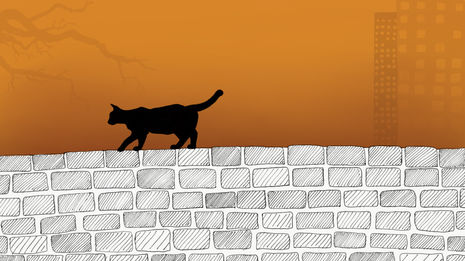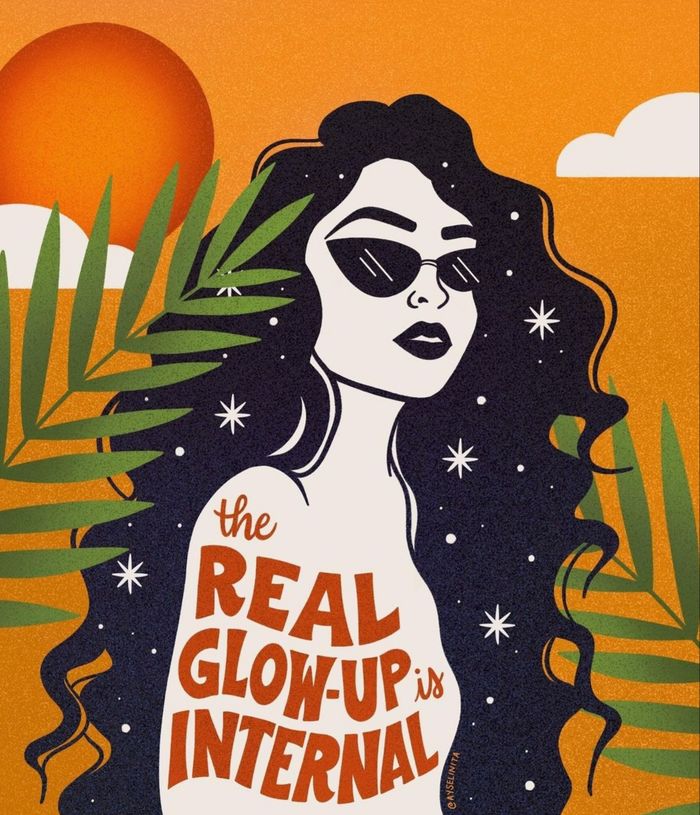On Curiosity
James Critchley, who started to wander the streets of his home-city in the evenings during the lock-down, shares how his neighbors’ cat encouraged him to not necessarily ignore the ‘useless’.

The Japanese artist Akasegawa Genpei was an observant streetwalker. In the early 1980s, he conceived a brand of art known as ‘Hyperart Thomasson’, which championed the artistic merit of curiously ‘useless’ architectural oddities. The movement is named after a high-profile sporting failure, Gary Thomasson, whose record move to the baseball team the Yomiuri Giants was nothing short of catastrophic (and saw him swiftly relegated to a redundant position spectating from the sidelines). Akasegawa’s philosophy is one that is attentive to the puzzling mysteries of ‘redundancy’ in the urban landscape. It is particularly interested in those strangely opaque features of our surroundings whose function is not immediately transparent—the sort of object that resists immediate classification yet insists upon further investigation. The example that stimulated Akasegawa’s imagination was a staircase in Tokyo that led to nowhere; the steps were well maintained and the handrail polished, but at the top of the stairs the climber was faced by an unbudging concrete wall. Curious, no?
It is such playful moments of befuddlement that illuminate our existence. Even more so in these times of monotonous days and restricted living. I took great pleasure during lockdown in wandering the streets of my home city at night, alone, and soaking in the richly perplexing eccentricities of the hive of activity that occurs, unceasing, while we are ordinarily looking the other way.
“My feline tour-guide led me through streets and alleys that I was previously utterly unaware of.”
My neighbour’s cat is somewhat overfamiliar. One night, after my standoffish resistance to her adamant purring broke down, I complied in following her path. My feline tour-guide led me through streets and alleys that I was previously utterly unaware of. Although but minutes from where I lived, these winding avenues felt like thrillingly strange new pastures for exploration. At the height of the evening’s rambling, I pursued the cat as she ascended a disused fire escape; a riled voice in my head admonished me for even entertaining the idea of following her example. However, I conceded, and at the metal stairs’ pinnacle, I was met by a stunning view of the city. Its deep orange lights glowed in the hazy dusk with a renewed freshness. My curiosity had won out. There is an entire realm of experience—a hidden, pulsing vitality—that we widely ignore in our pursuit of all things productive.
Life is so often consumed by things that claim perfection. Too often we are judged by a standard that values profitable conformity above liberating individuality; and such a growing demand for every element of our lives to be ‘useful’ has worrying implications for the future. Funding for the arts is being cut; and increasingly students are choosing subjects for their ‘employability’—their ‘usefulness’. Such a relentless focus on being ‘valuable’ to society is a product of the commodification of education; because we are forced into ‘paying’ for something, there is a pressure to ‘buy’ a ‘product’ that society tells you will be ‘profitable’ for a long time afterwards. The language of business leaves little room for the pursuit of curiosity. Given that our generation is widely expected to have to work well into our seventies, such a model seems unsustainable. Following the monotonous, plodding path of productivity surely is a narrow way of experiencing the world. Yes, without a shadow of a doubt, people must have a purpose in life; we must do something that contributes to society, but this must not be at the expense of allowing oneself to flourish in the pursuit of things that are outliers, that defy the grim disciplinarians of usefulness and efficiency. Curiosity, the ability to shift perspectives and be unafraid of freely pursuing the unusual, will be crucial as humanity faces up to an uncertain future, where even something as foundational as the continued habitability of the earth is under question. The willingness to be unconstrained by convention, to be intrigued by the idiosyncratic aspects of the world that so greatly bound Akasegawa’s attention, is part of such an effort to broaden our capacity for empathy and creativity.
“Curiosity, the ability to shift perspectives and be unafraid of freely pursuing the unusual, will be crucial as humanity faces up to an uncertain future”
Virginia Woolf is renowned for her neologisms. Her coinage, ‘irreticence’, in particular, comes to mind in explaining the value of exploring the more outré aspects of life—of actually following up on that niggling instinct of curiosity so often numbed by the urgent need to follow the shoal during day-to-day living. Perhaps, as we emerge from the spectre of confinement and repetition, we will find more time for ‘irreticence’; perhaps we will be able to see and craft the world with a fresher, more curious, gaze.
 News / CUP announces funding scheme for under-represented academics19 December 2025
News / CUP announces funding scheme for under-represented academics19 December 2025 News / Cambridge welcomes UK rejoining the Erasmus scheme20 December 2025
News / Cambridge welcomes UK rejoining the Erasmus scheme20 December 2025 Comment / Yes, I’m brown – but I have more important things to say22 December 2025
Comment / Yes, I’m brown – but I have more important things to say22 December 2025 News / SU reluctantly registers controversial women’s soc18 December 2025
News / SU reluctantly registers controversial women’s soc18 December 2025 Film & TV / Timothée Chalamet and the era-fication of film marketing21 December 2025
Film & TV / Timothée Chalamet and the era-fication of film marketing21 December 2025









